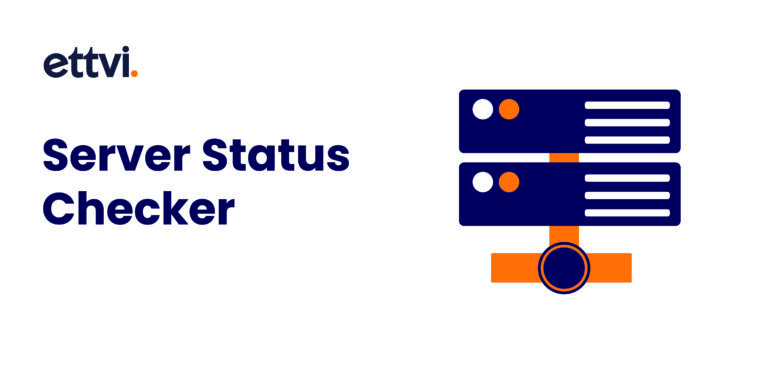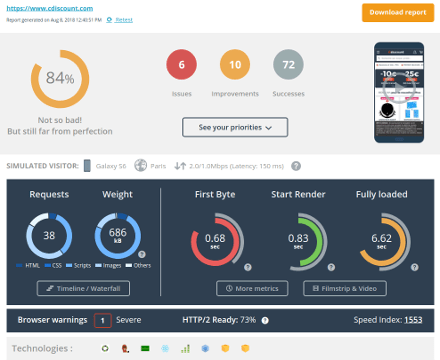What is a Blacklist Lookup and Why is it Essential for Your Online Presence?
Maintaining a good online reputation is critical for both individuals and businesses. One major threat to this reputation is being blacklisted, which can have severe consequences, especially for email marketers and website administrators. This is where a blacklist lookup tool becomes indispensable. By running regular blacklist checks, you can identify if your IP address or domain is on any major blacklists, helping you to take quick actions and maintain the trust of your audience.
What is a Blacklist Lookup?
A blacklist lookup is a tool that checks whether a particular IP address or domain name is listed on email blacklists or DNS-based blacklists. These blacklists are databases managed by various organizations to prevent spam, phishing, and other malicious activities. If an IP address or domain is found to be a source of spam or malicious content, it gets blacklisted, impacting email delivery and website reputation.
Common Uses of Blacklist Lookups:
- Email Marketing: Ensures email servers aren’t blacklisted, allowing marketing emails to reach their intended recipients.
- Website Security: Identifies if a website or IP is compromised and flagged for suspicious activity.
- Reputation Management: Helps individuals and businesses maintain a clean online presence.
Why is Blacklist Lookup Important?
Being blacklisted can have serious implications, especially for businesses that rely heavily on email marketing and customer communications. Here’s why regular blacklist lookups are crucial:
- Email Deliverability: A blacklisted IP or domain often results in emails landing in spam folders or being blocked entirely. This disrupts communication and can lead to lost business opportunities.
- Search Engine Ranking: Some search engines monitor blacklists to rank websites. If your domain is blacklisted, it could negatively impact your SEO efforts.
- Customer Trust: A blacklisted IP address may signal to customers that your site or emails are untrustworthy. Maintaining a clean record is essential for customer trust and loyalty.
How to Perform a Blacklist Lookup
Performing a blacklist lookup is straightforward and can be done using various online tools. Here are some simple steps to get started:
- Select a Blacklist Lookup Tool: Many websites offer free blacklist lookup services, including MXToolbox, Spamhaus, and Barracuda. These tools check multiple blacklists simultaneously.
- Enter the IP or Domain: Input the IP address or domain name you want to check. It could be your website, mail server, or any IP associated with your operations.
- Analyze Results: Most tools will indicate if your IP or domain appears on any blacklists. If it does, the tool typically specifies which blacklist(s) flagged it and may provide a reason.
- Take Action if Necessary: If your IP or domain is listed, take immediate action. This may involve contacting your hosting provider, securing your website, or updating email practices to ensure compliance with anti-spam policies.
Popular Blacklist Lookup Tools
- MXToolbox: A comprehensive tool that checks over 100 DNS-based blacklists. It’s free for basic use and provides detailed information on blacklist status.
- Spamhaus: One of the most widely respected anti-spam organizations globally, it provides an online lookup tool to verify if your IP or domain is blacklisted.
- Barracuda Central: Known for its high standards, Barracuda Central allows users to check if their domain or IP is blacklisted and offers steps for removal.
- SenderScore: Although primarily used to check email reputation, SenderScore also provides insight into potential blacklist issues, making it valuable for email marketers.
What to Do If You’re Blacklisted?
If a blacklist lookup reveals that your IP address or domain is blacklisted, it’s essential to act quickly to avoid prolonged issues. Here are some general steps:
- Identify the Cause: Often, blacklisting is due to high email volume, outdated security protocols, or compromised credentials. Work with IT support or security experts to determine the root cause.
- Follow Delisting Procedures: Most blacklists offer a way to submit a de-listing request. This usually involves explaining the situation and assuring the blacklist operator that the issue has been addressed.
- Implement Strong Security Practices: Regularly update passwords, monitor email practices, and implement spam filters to reduce the chances of being blacklisted again.
- Monitor Regularly: Use blacklist lookup tools on a regular basis, especially if you’re running a website or email campaigns.
Conclusion
A blacklist lookup is a vital tool for anyone who wants to ensure uninterrupted communication, maintain SEO rankings, and build customer trust. Regularly monitoring your IP addresses and domain for blacklist status can help prevent many issues, from poor email deliverability to potential security threats. By staying proactive with blacklist checks and promptly addressing any issues, you can protect your reputation and stay connected with your audience.






